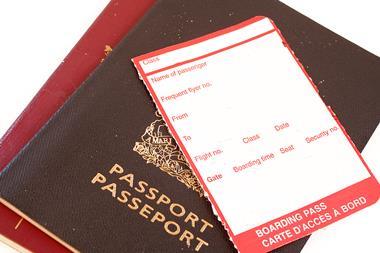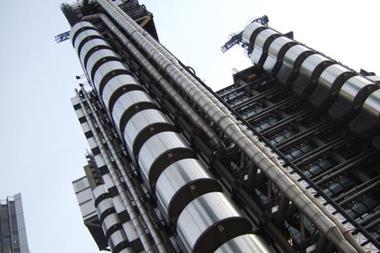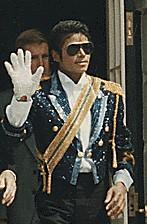Not everyone’s happy with the new Lloyd’s market technology initiative, but will they put their money where their mouths are?
Lloyd’s of London’s best-known technology initiative is arguably still the failed Kinnect electronic trading system. Lloyd’s pulled funding on the project in 2006, having spent £70m on it.
Since that setback, the market has been making valiant efforts to erase this seemingly indelible blot on its copy book and create a successful electronic trading initiative. A cornerstone of its efforts is the Exchange, formerly known as the Lloyd’s Exchange (see panel).
However, while the market sees the Exchange as a step in the right direction, the initiative is failing to realise its full potential. More damning still for the London market as a whole is that this cannot be blamed on the technology. Rather, unpreparedness and in some cases stubbornness of market practitioners is preventing true success.
The system underwent its first pilot from October to December 2010, which covered electronic transmission of endorsements – documents instructing a change to an insurance policy – and their supporting messages for primary marine hull, cargo, war and liability business.
The London Market Group (LMG) – which represents the Exchange’s stakeholders – produced a report that included a fairly damning indictment of the pilot’s shortcomings. The technology and processes got the thumbs up from both underwriters and brokers, with 89% saying the processes were up to scratch and 85% positive on the technology. But only 35% felt that the pilot process benefited their business.
The report also found that the market still needs some convincing of the Exchange’s value. A mere 15% of participants agreed that the pilot process had won over the hearts and minds of brokers and underwriters.
Not all bad news …
Despite this, it would be a mistake to denounce the Exchange or the marine pilot as a failure. Figures provided by the Lloyd’s Market Association (LMA) say that, up to May 2011, 325,000 messages had been transacted on the system, compared with just 12,000 up to June 2010.
The LMA said that volumes had not dropped following the pilot’s completion, indicating that the market has continued to find electronic endorsements useful. But it declined to provide a monthly breakdown of volumes to verify this.
It is difficult to get a true picture of the project’s health from the numbers provided. Nevertheless, the results were sufficiently good for the Exchange’s four backers to commit to rolling out e-endorsements for more business lines. It will add property, professional indemnity and specie in July, with all other lines scheduled to be online by April 2012.
… but could do better
The LMG survey results show something is not quite working, however. Being able to send and receive electronic endorsements is one thing, but the real benefit comes when those electronic messages can automatically flow through to broking and underwriting systems. Without this link, participants might as well be emailing one another.
One source says: “There are only a few companies that are fully integrated to the Exchange. Its primary purpose is to make the distribution and collection of data between brokers and underwriters more efficient. In other words, if data is sent electronically, it should be possible to re-use that data electronically. If you don’t integrate your systems, you can’t re-use the data.”
LMA head of market processes Rob Gillies says the organisation had not recorded how many of the participants in the pilot were fully integrated, but adds: “As we progress with this initiative, it will be an interesting measure of progress and success to review the level of integration that takes place within firms.”
He says the number of fully integrated participants was probably a minority, but argues that this was not a minus point, given that it was a pilot. “Understandably, many firms went in at an entry level to enable them to participate, and deferred decisions about increased spend and increased organisational change until the situation was clearer.”
Waiting games
The position described by Gillies is creating a Catch-22: companies want to see benefits before investing, but will not get the full benefits until they invest. “At the moment, everybody is waiting for everybody else to invest,” says the source.
In addition, it is tricky to produce a cost-benefit analysis, in part because there is no record of how many endorsements are in the market. “There is no central point to draw that data from,” Gillies says.
Further stunting e-endorsements’ usefulness is the fact that they are currently only suitable for the simplest kind: so-called ‘silent endorsements’, where there is no negotiation required between broker and underwriter. Where negotiation is needed, having to insert the digital messages into the face-to-face process adds another layer of complexity.
Meanwhile, one of the stated benefits of the pilot was improved turnaround times. According to Ernst & Young, the quickest recorded time was 15 seconds. But the firm also noted frustration that some simple endorsements, which would have been dealt with in a few hours using traditional methods, took more than 48 hours.
“Frankly, it could be better than it is,” says Lloyd’s broker RFIB’s head of information technology, Mark Kinsella. “Turnaround times from underwriters are not always what they are stacked up to be.”
Though the drawbacks frustrated some, they have spurred others to make changes. Pilot participant Markel International recognises the need to link the Exchange to its systems. “We want the electronic message to go to the underwriter and then, on approval, flow straight into our underwriting systems. That is when we really get the value of being able to trade electronically,” operations director Hugh Maltby says.
Whatever the drawbacks of the Exchange, it is clear that the market does not have another Kinnect on its hands. Although the LMG report found that only 35% of the participants felt the pilot benefited their business, 89% said the pilot would provide benefit with modifications.
File this one under ‘has potential’.
The ins and outs of the Exchange
Since the failed Kinnect project, Lloyd’s and the wider London market have abandoned trying to impose electronic trading on the market. The focus is now firmly on supporting traditional face-to-face negotiation with electronic processes, such as transmitting data and documentation.
In keeping with this thinking, the Exchange is designed to enable brokers and underwriters in Lloyd’s and the wider London market to exchange Acord-standard messages.
Initially a Lloyd’s-only initiative, the Exchange is now run by a separate company, The Message Exchange Ltd (TMEL). It is jointly owned by the International Underwriting Association, the Lloyd’s Market Association, The London & International Insurance Brokers’ Association and Lloyd’s itself.
The London Market Group, representing the joint interests of the four Exchange stakeholders, hailed the pilot as a success. In addition, all 49 Lloyd’s managing agents, 28 IUA members, and 25 brokers, representing 80% of the business placed in Lloyd’s, are now connected to the Exchange.
Talking points
? Is the London market disadvantaged internationally by its failure to grasp technological change? Or does the face-to-face nature of the market remain a selling point?
? Given its history, is the London market truly capable of a technological revolution? What would it take?
? Is there enough leadership in the market to push change forward? Whose role should this be?
Hosted by comedian and actor Tom Allen, 34 Gold, 23 Silver and 22 Bronze awards were handed out across an amazing 34 categories recognising brilliance and innovation right across the breadth of UK general insurance.














































No comments yet